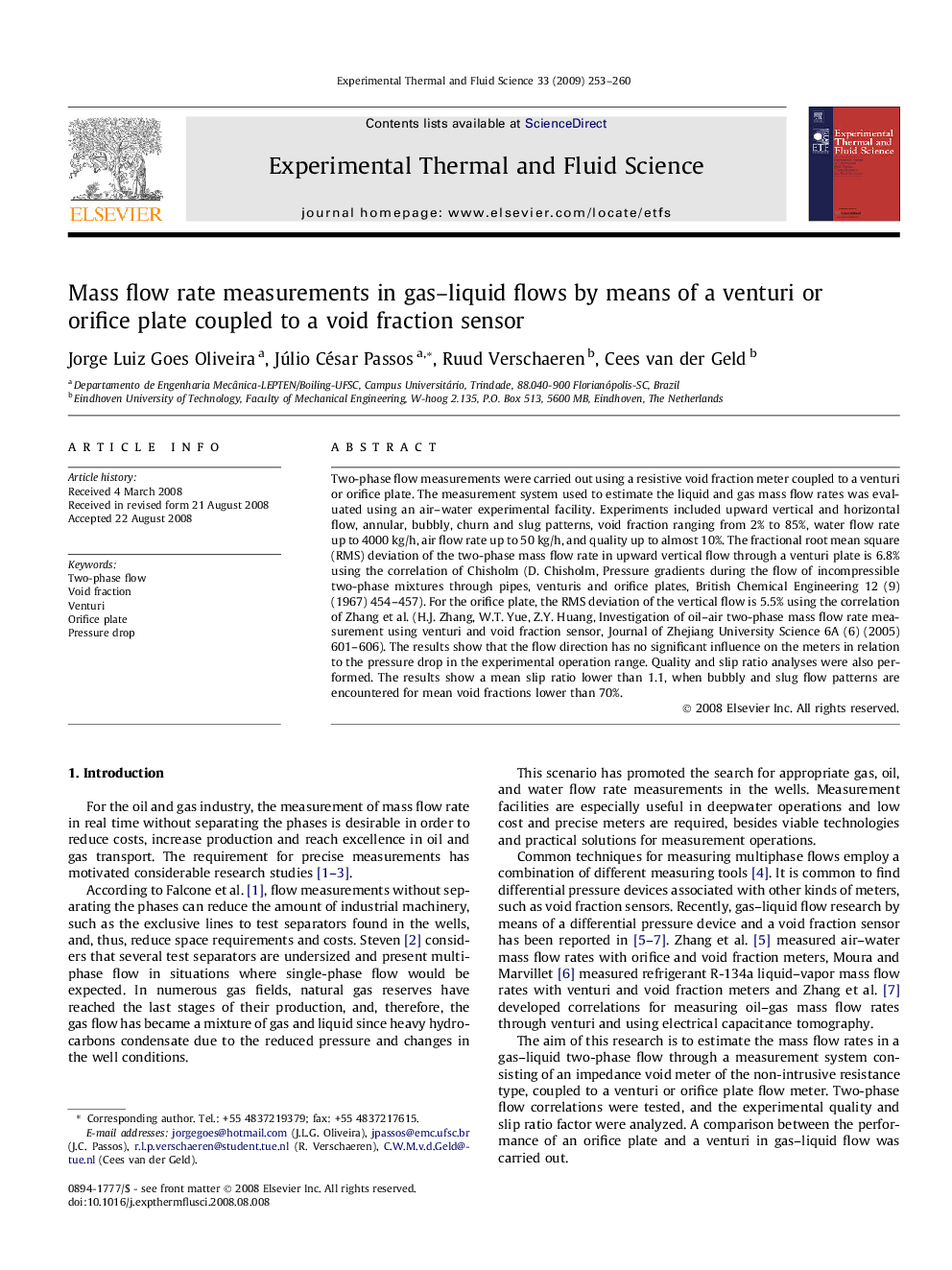| کد مقاله | کد نشریه | سال انتشار | مقاله انگلیسی | نسخه تمام متن |
|---|---|---|---|---|
| 652308 | 885013 | 2009 | 8 صفحه PDF | دانلود رایگان |

Two-phase flow measurements were carried out using a resistive void fraction meter coupled to a venturi or orifice plate. The measurement system used to estimate the liquid and gas mass flow rates was evaluated using an air–water experimental facility. Experiments included upward vertical and horizontal flow, annular, bubbly, churn and slug patterns, void fraction ranging from 2% to 85%, water flow rate up to 4000 kg/h, air flow rate up to 50 kg/h, and quality up to almost 10%. The fractional root mean square (RMS) deviation of the two-phase mass flow rate in upward vertical flow through a venturi plate is 6.8% using the correlation of Chisholm (D. Chisholm, Pressure gradients during the flow of incompressible two-phase mixtures through pipes, venturis and orifice plates, British Chemical Engineering 12 (9) (1967) 454–457). For the orifice plate, the RMS deviation of the vertical flow is 5.5% using the correlation of Zhang et al. (H.J. Zhang, W.T. Yue, Z.Y. Huang, Investigation of oil–air two-phase mass flow rate measurement using venturi and void fraction sensor, Journal of Zhejiang University Science 6A (6) (2005) 601–606). The results show that the flow direction has no significant influence on the meters in relation to the pressure drop in the experimental operation range. Quality and slip ratio analyses were also performed. The results show a mean slip ratio lower than 1.1, when bubbly and slug flow patterns are encountered for mean void fractions lower than 70%.
Journal: Experimental Thermal and Fluid Science - Volume 33, Issue 2, January 2009, Pages 253–260